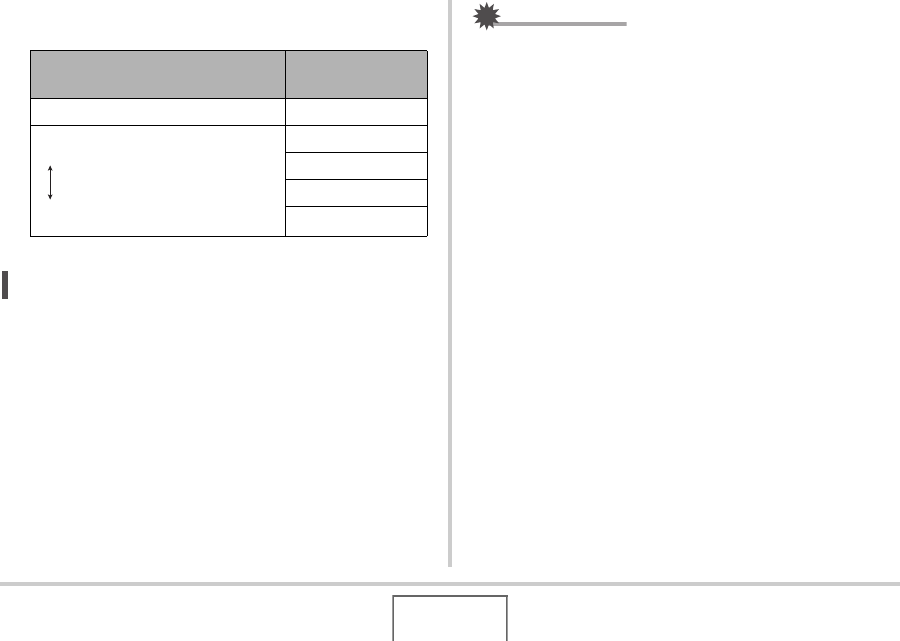User Guide
Table Of Contents
- UNPACKING
- CONTENTS
- QUICK START BASICS
- INTRODUCTION
- GETTING READY
- SHOOTING A SNAPSHOT
- SHOOTING A MOVIE
- USING BEST SHOT
- ADVANCED SETTINGS
- Changing the Focus Mode
- Correcting Image Brightness (EV Shift)
- Controlling White Balance
- Specifying ISO Sensitivity
- Specifying the Metering Mode
- Using the Camera’s Filter Effects
- Controlling Image Sharpness
- Controlling Color Saturation
- Adjusting Image Contrast
- Date Stamping Snapshots
- Using the On-screen Histogram to Check Exposure
- Other Useful Recording Functions
- VIEWING SNAPSHOTS AND MOVIES
- EDITING IMAGES
- USING AUDIO
- MANAGING YOUR FILES
- DELETING FILES
- OTHER SETTINGS
- Configuring Camera Sound Settings
- Turning the Startup Screen On or Off
- Specifying the File Name Serial Number Generation Rule
- Changing the Camera Date and Time Setting
- Using World Time
- Changing the Display Language
- Changing the USB Port Protocol
- [_] (REC) and [>] (PLAY) Button Settings
- Formatting Built-in Memory
- PRINTING
- USING THE CAMERA WITH A COMPUTER
- APPENDIX

111
ADVANCED SETTINGS
3. Use [W] and [X] to select the setting you want
and then press [SET].
NOT
E
• You also can change the ISO sensitivity setting using the
menu that appears when you press [MENU] (pages 49,
215).
IMPORTANT!
• Using flash with high ISO sensitivity can cause problems
with subjects that close to the camera.
• “Auto” ISO sensitivity always is used for movies, regardless
of the current ISO sensitivity setting.
• You can use the key customization feature to configure the
[W] and [X] buttons so they control the ISO sensitivity
setting (page 119).
To shoot with this level of
sensitivity:
Select this
setting:
Automatically selected by camera. Auto
Low
High
ISO 50
ISO 100
ISO 200
ISO 400










